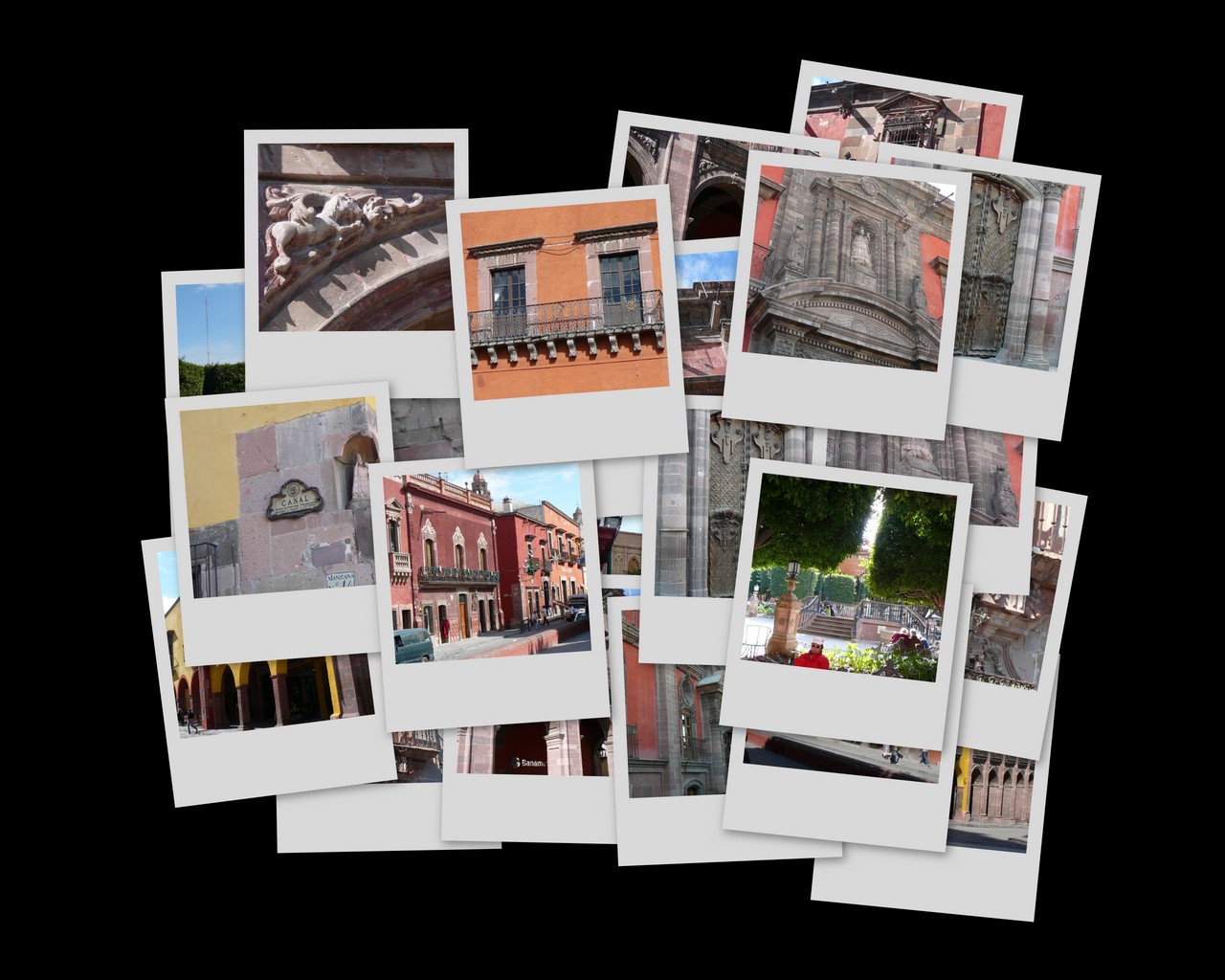

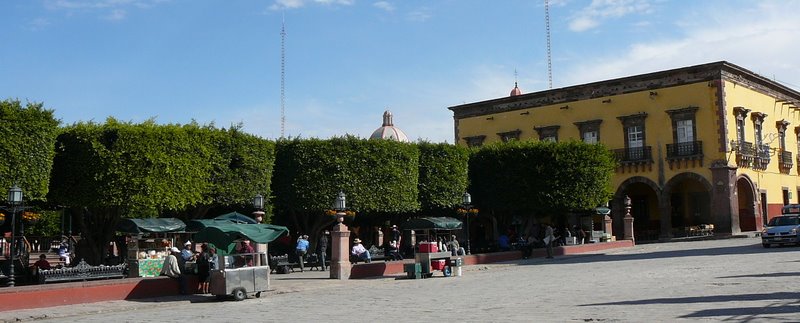
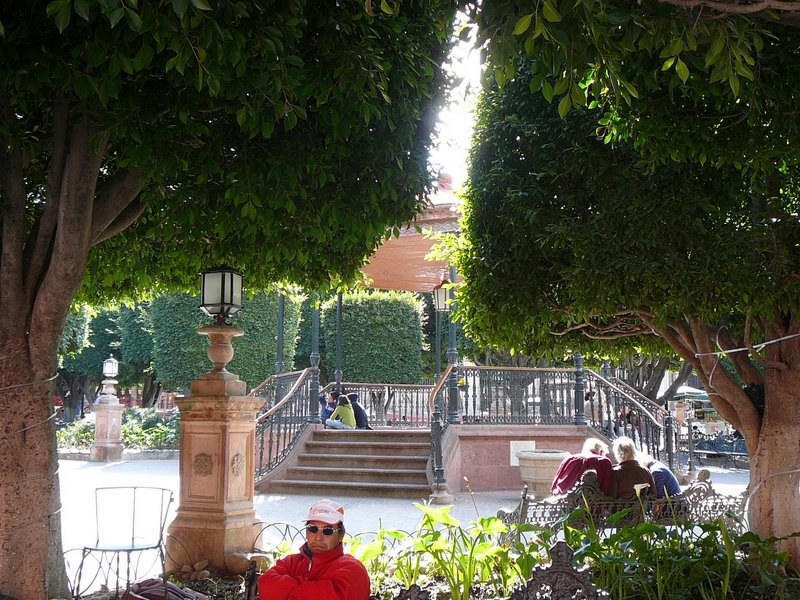
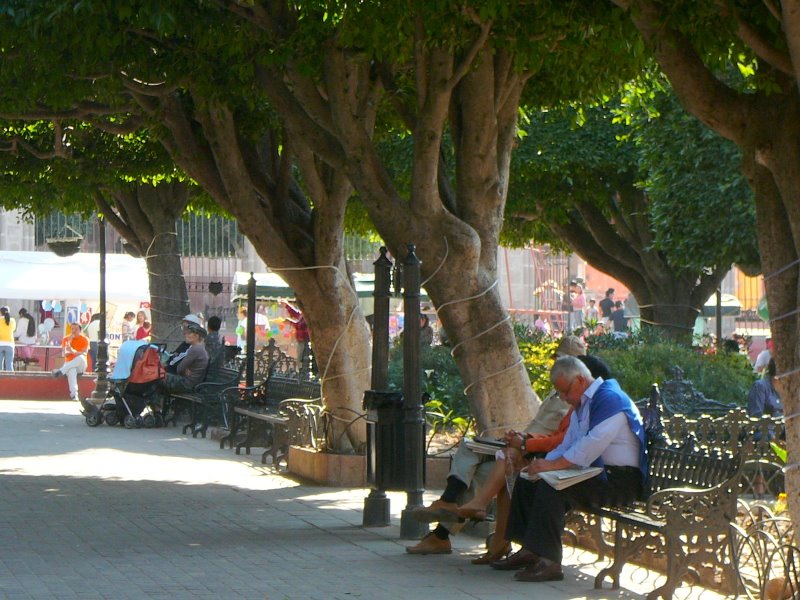
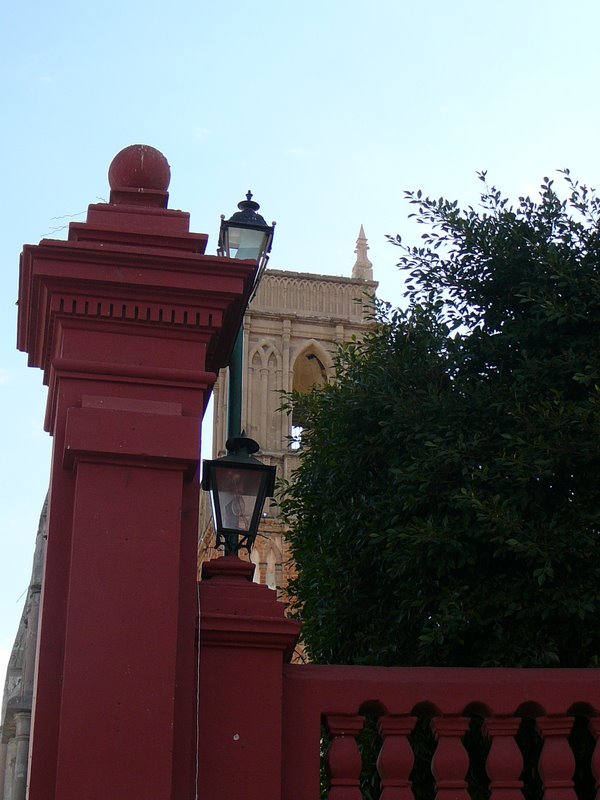
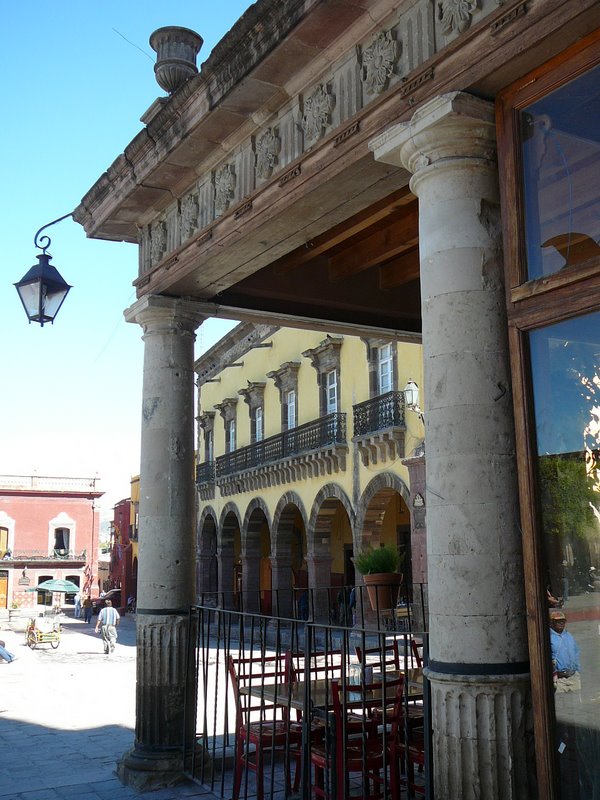
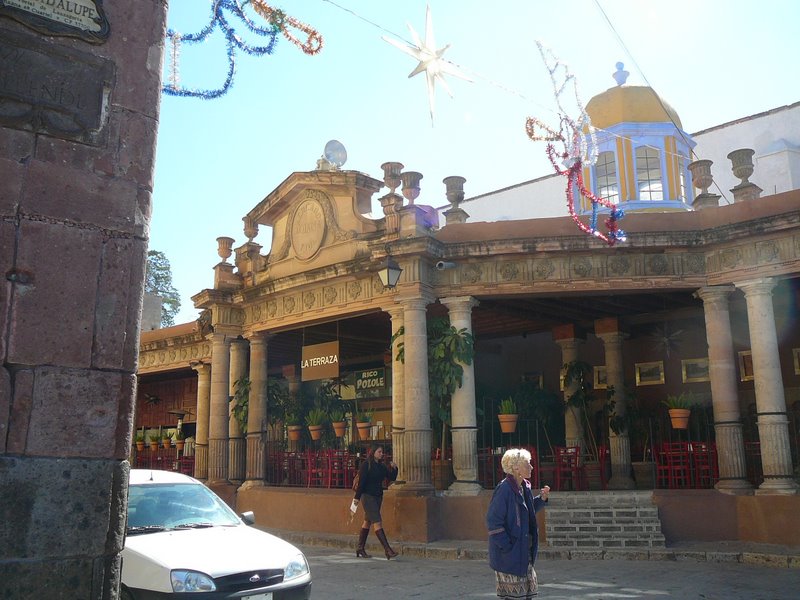
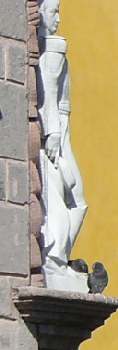 |
Crossing the Jardin and moving slightly downhill, we see the portal and area to the west of the Jardin. It doesn't bustle like the east side but rather rises in noble splendor with the Canal palace and the Allende House. Both these houses of aristocratic families sit on northeast corners and contain statues, one (Ignacio Allende at left) of the secular hero who provided what military structure he could to the ragtag mob that attacked this town to start the War of Independence. The other (at right) of the Virgin of Loreto, patron of the powerful Canal family. When the mob came to San Miguel, the commander of the local garrison was Colonel Narciso De La Canal. He kept his troops in quarters. His rebellious neighbor Ignacio Allende herded the Spanish aristocrats into the nearby college -- terrifying them, but saving their lives by stopping the mob from approaching them. | 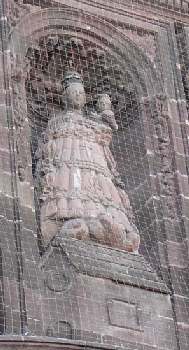 |
|
|
|
| The Allende homestead: Here was born a man known everywhere... | ...with its plaque |
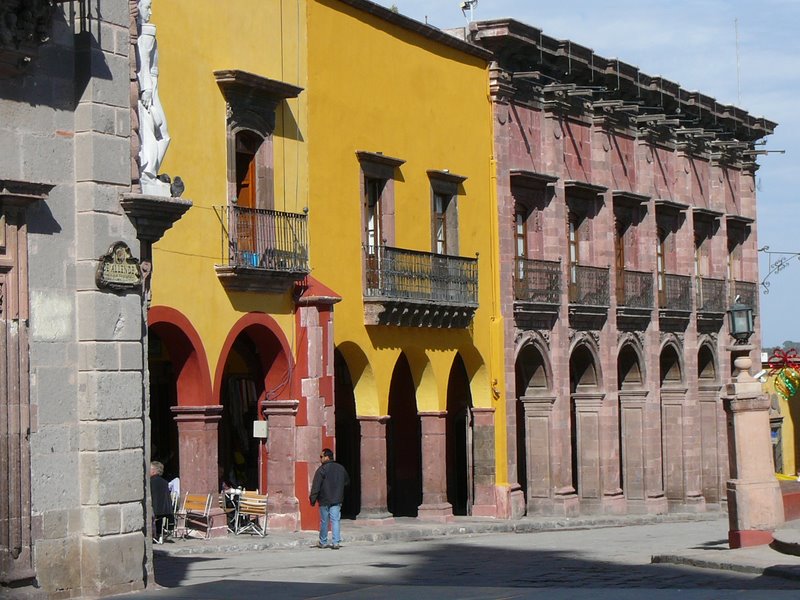
Before turning our attention to the De la Canal mansion,
let's study a few architectural flourishes on its fellow west
side buildings:
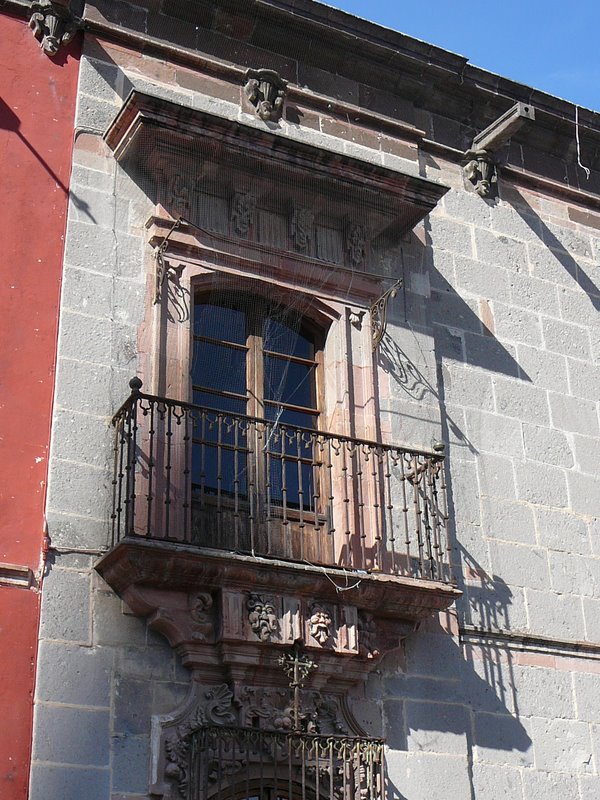
Above is one of those baroque windows sporting both stone carvings and wrought iron.
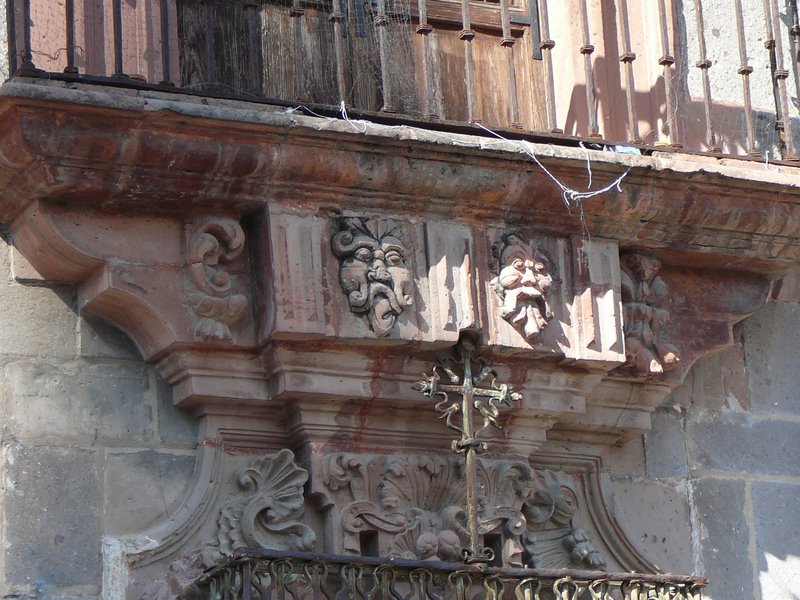
Above and below are two versions of a typical 18th century Mexican Cortina: the stone reliefs suggesting cloth draperies.[17]
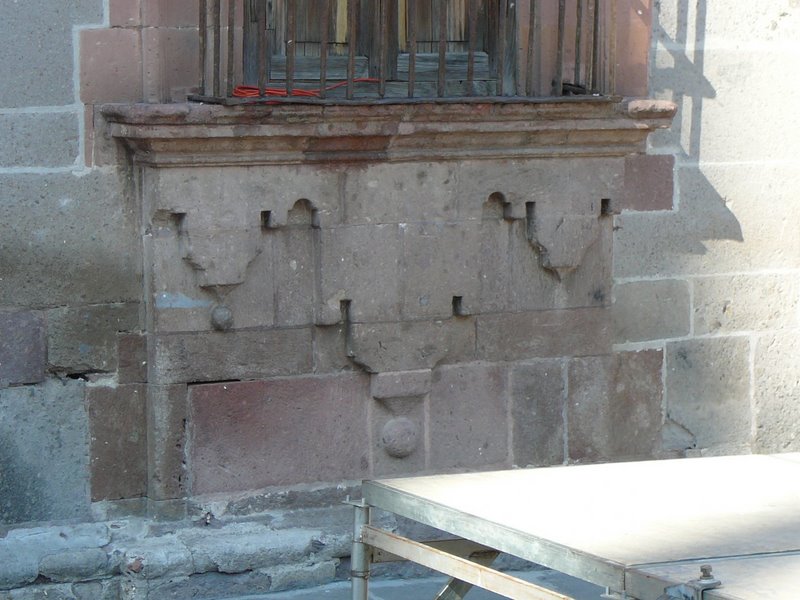
Not all of the embellishments are attractive: note the electrical wiring below...
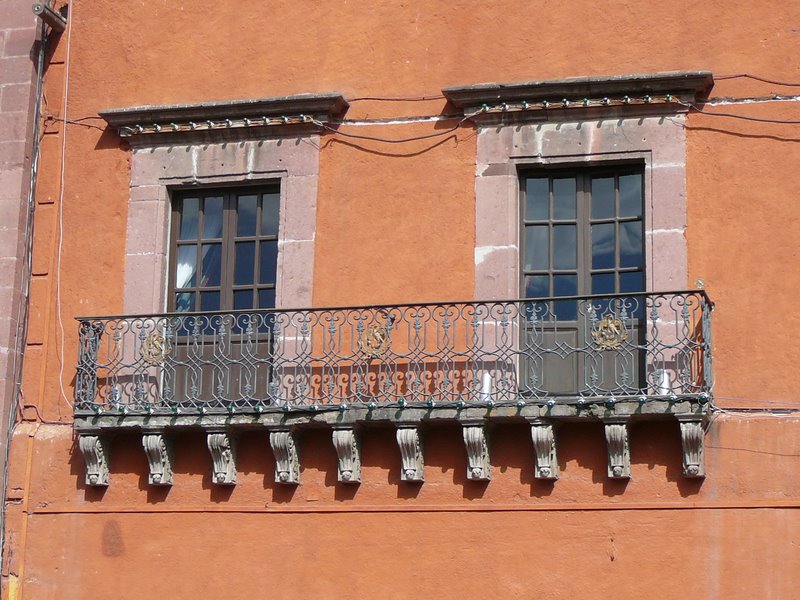
...the delicate cast iron railings not necessarily improved by the lights from the wiring. Do you want to look good during the day or at night?
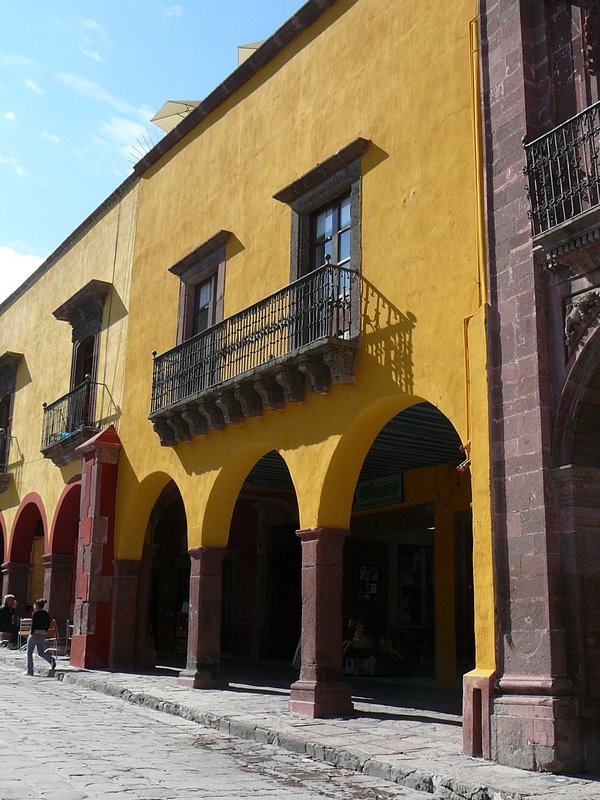
Above is a typical west-of-Jardin residence abbutting the Canal mansion. It shows the arcaded retail space below the living quarters typical of a late 18th century well-to-do family's residence.
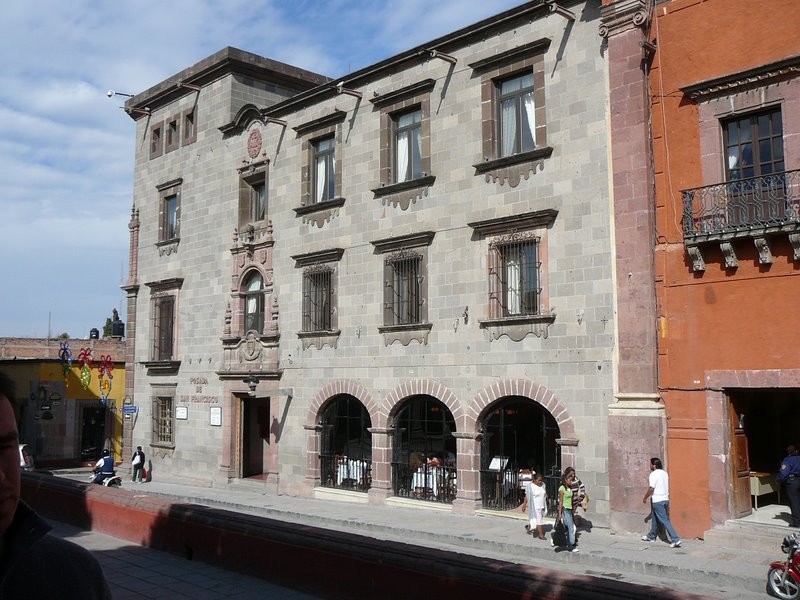
Before turning to the granddaddy of San Miguel mansions,
let's look at some newer construction (above) on the north
side of the garden. This building, the Posada (hotel)
San Francisco is trying its best to fit in with the lavish
Canal Mansion kitty cornered to it, but it's a bit
budget-challenged. But thanks for the effort! The
site was previously a residence of a Canal relative. In
1939 it became the first hotel built specifically for
tourists; it's target were the art students, also somewhat
budget-challenged. Form follows cash flow!
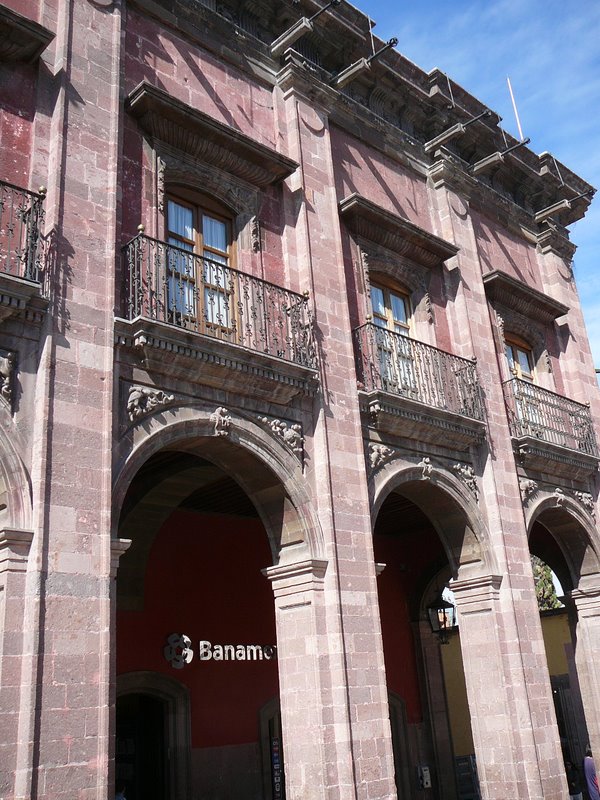
|
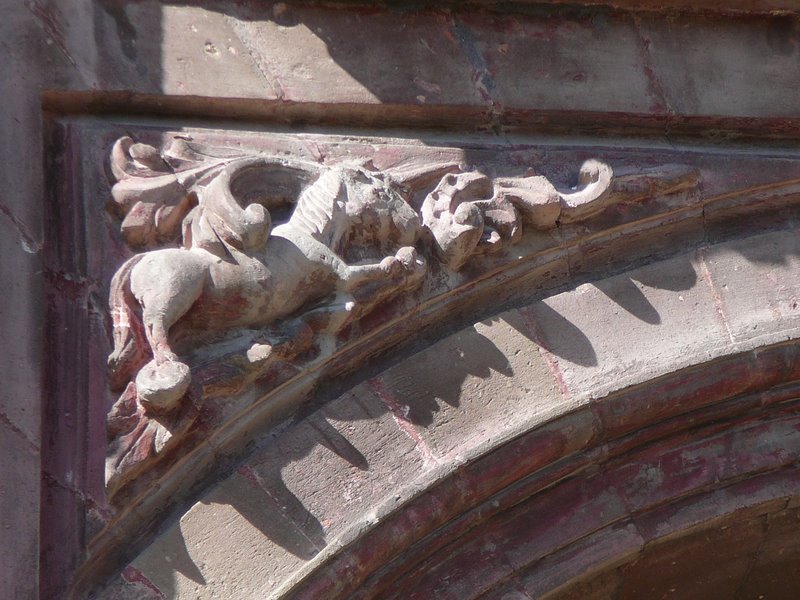
Above: A detail from the Banamex building at
left which was originally the De la Canal Family
mansion. The banking conglomerate Banamex was
gobbled up by CitiGroup in
2001. They occasionally exhibit
their art collection inside.
|
The next several pictures show the residence of the towns most historied family, the Canals. (By the way, this was their winter residence; their summer estate is about a mile away and is now the Allende Institute, an internationally acclaimed art school. Click here to see more of it).
The picture below actually shows two places where the family lived: the northeast edge of the pink family home and the steeple and dome of the Convent of the Immaculate Conception (called Las Monjas by Miguelinos). The convent was built with the dowry of the Canal's oldest daughter Josefa, who at age 15 decided to use her inheritance to create a convent for a new order of nuns which she would lead. Her convent exists to this day, see it by clicking here. This photo was taken from the north side of the Jardin looking west as Canal steet slopes ever-so-gradual to the dry riverbed.
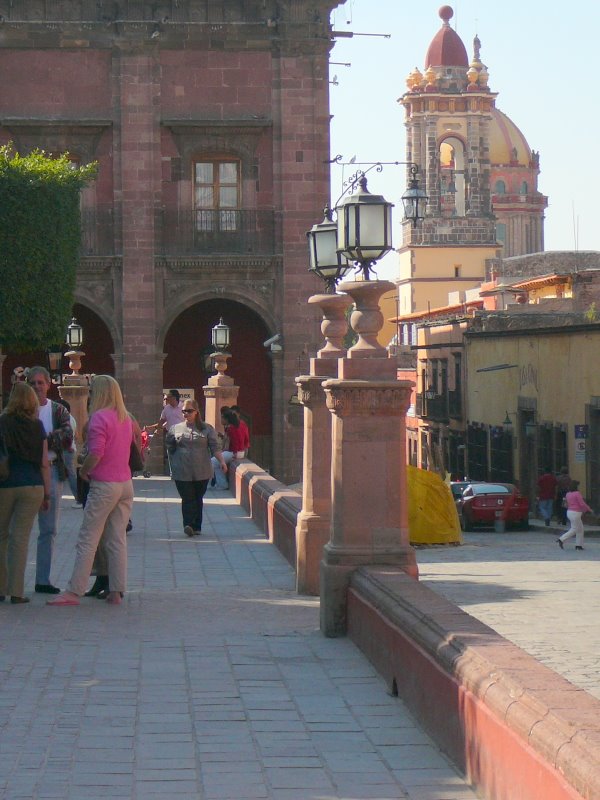
In contrast to the white secular statue of Ignacio Allende watching from the south side of the west portal, here's the Virgin of Loreto guarding the same area from the north end. The street is, of course, named after the family that built the two most important structures on it: the mansion and the convent.
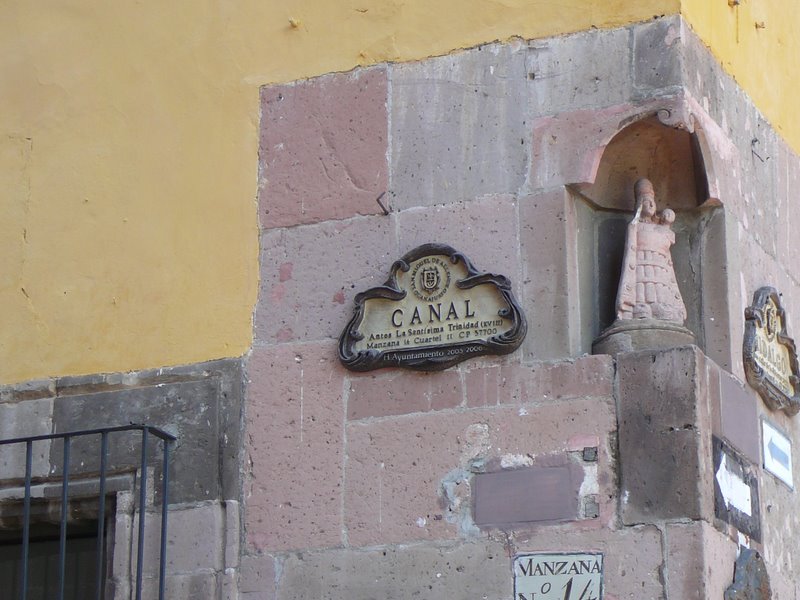
Many street corners in this area contain statues, many of
them of the stations of the cross, used by the faithful for
outside devotions during the Lenten season. In other
cases, these are merely simple shrines, often decorated with
freshly (or not so freshly) cut flowers. On this now Starbucked corner, the simple statue
echoes the icon above the elaborate doorway across the
street. It is, of course, the doorway of the
mansion of the town's richest family, the Canals:
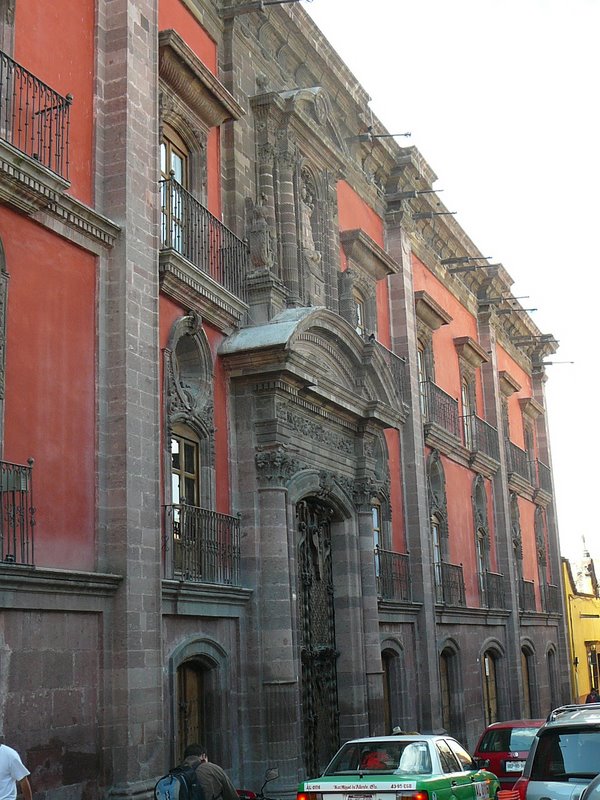
The Canal Palace is in the Mexican neoclassic style called "severe" in vogue in the 18th century. It usually featured black and one other color, often red as we see here. The influence of the famous regional architect/artist Francisco Eduardo Tresguerras is evident, but may be through craftsmen imitating his work which can be found elsewhere in the town, notably in the crypt at the nearby Parroquia or directly east in the church of San Francisco. Let's look more closely at this entrance which borrows from many traditions: Greek columns, Moorish doors, Spanish heraldry, and, of course, Catholic myth.
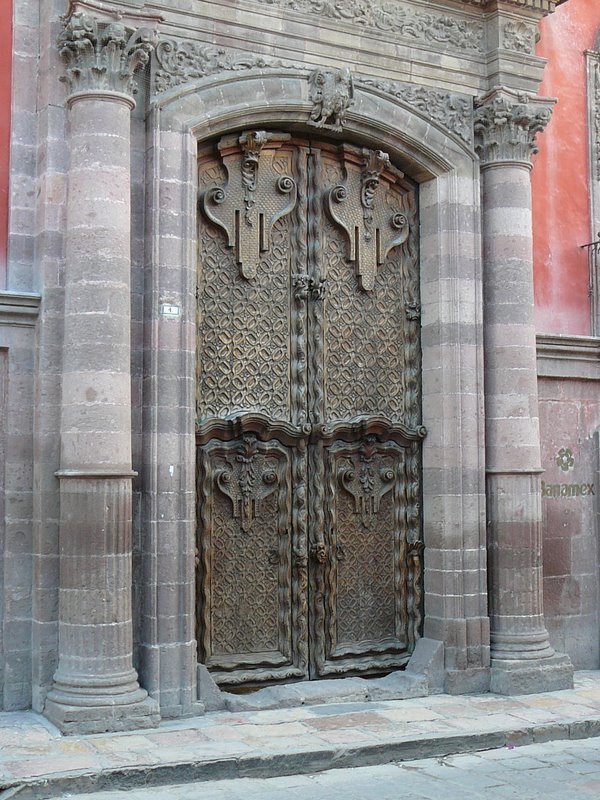
A final shot of the Jardin at night: We found this spot lively at all times. Once darkness falls, Mariachi bands congregate, hoping to entice gentlemen to purchase a song for their ladies. The better musicians (including Doc Severinsen) are often working in the many lively bars and restaurants. Musicians left on the street play enthusiastically but not always that well. What of it? The atmosphere is great and by this time of night, your belly and hopefully your spirits are full. You may also be full of spirits which makes the music sound even better than it is -- and you more likely to part with pesos to hear more of it.
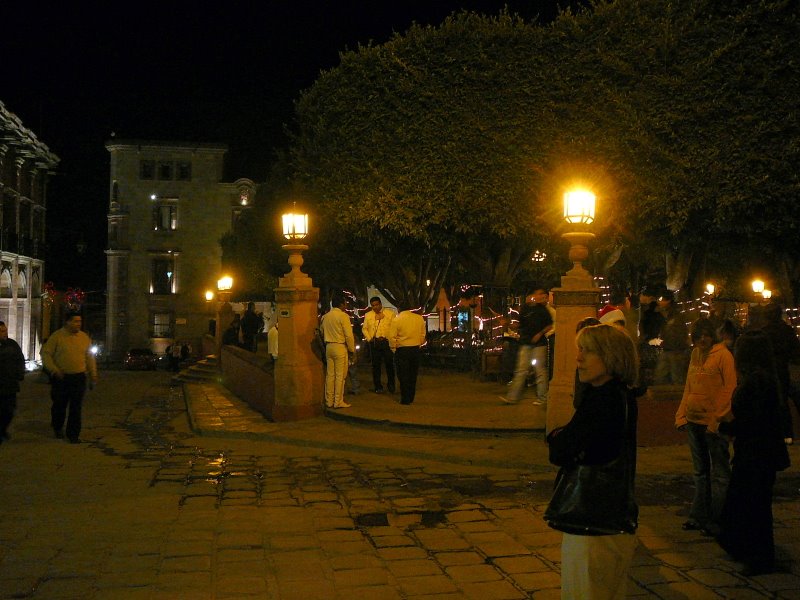
Please use the back arrow on your browser to return to the photo essay or click here.
Geek and Legal StuffPlease allow JavaScript to enable word definitions. This page has been tested in Internet Explorer 7.0 and Firefox 2.0. Created on April 15, 2008 |
 |